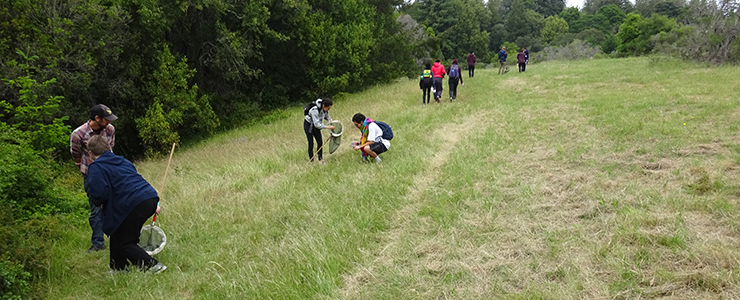Classes
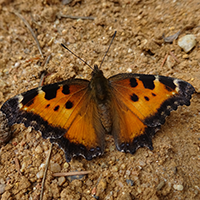 The location of UC Santa Cruz Campus Natural Reserve makes it an ideal setting for undergraduate teaching and research, as it is literally steps away from the lecture hall and libraries and can be accessed within minutes. Having a living laboratory and outdoor classroom accessible on campus provides a unique and important resource for courses focused on the environmental sciences.
The location of UC Santa Cruz Campus Natural Reserve makes it an ideal setting for undergraduate teaching and research, as it is literally steps away from the lecture hall and libraries and can be accessed within minutes. Having a living laboratory and outdoor classroom accessible on campus provides a unique and important resource for courses focused on the environmental sciences.
In the 2016-17 fiscal year students within 72 course offerings of 52 unique courses participated in field trips on CNR or adjacent natural lands. The CNR hosted numerous courses from the EEB and ENVS departments and as well as courses from several other departments and disciplines.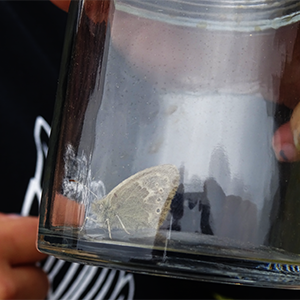
Below are brief descriptions of field activities from courses that have visited the CNR for some on-campus learning and fun.
Ecology and Evolution (BIOE 20C)
Optional/outside of regularly-scheduled class time field activities were offered for all four Quarters of 2014-15, allowing a total of 340 undergraduates a chance to learn about succession and vegetation community dynamics on the CNR. For this activity, students learn identification and life history traits of four tree or shrub species and work in small groups to make observations about how individuals of these species have established and grown following the logging and fire disturbances of the Cowell Ranch days. The activity takes place in the redwood forest, chaparral, and transitional forest areas north of the North Remote parking lot, and allows students to use their observations to speculate on successional dynamics as they make landscape interpretations. Many students were recruited as interns following their experiences on this field trip.
Society and Nature (SOCY 125)
37 students took their study of human relationships with and impacts on nature outdoors during Fall Quarter 2014. Students explored the lands in and around Crown Meadow in attempt to describe our local human population’s complex perceptions of and attitudes about nature through observation of physical impacts visible on the landscape—trails, trash, natural reserve designation and signage, fire roads, and student gathering areas. A lively discussion followed the field exploration.
Ecology and Society (ENVS 100)
150 students in Winter Quarter 2015 and 85 students in Spring Quarter 2015 explored topics in natural history and conservation during 1 hour and 45 minute field trips to the CNR.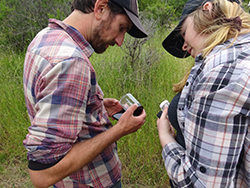 During Winter Quarter, each of the course’s 8 sections focused on salamander life history and habitat preferences, and had ample opportunity to find, observe and handle salamanders in their natural habitats. They then participated in a focused monitoring session in which they searched for salamanders along transects and quantified their findings with a Chi-square analysis. Spring Quarter’s warmth and dryness caused us to switch topics to invertebrate diversity in grasslands where forest intrusion is managed through vegetation removal and those where it is not. Students used sweep nets, beat sheets, and aspirators to collect and examine invertebrates, and then sampled along transects to compare diversity in shrubby (proxy for unmanaged) or grassy (proxy for managed) sections of grasslands. As this is the ENVS core course, every incoming ENVS major will have had at least one field experience that may help direct their interests for the remainder of their UCSC education. At one point during the invertebrate
During Winter Quarter, each of the course’s 8 sections focused on salamander life history and habitat preferences, and had ample opportunity to find, observe and handle salamanders in their natural habitats. They then participated in a focused monitoring session in which they searched for salamanders along transects and quantified their findings with a Chi-square analysis. Spring Quarter’s warmth and dryness caused us to switch topics to invertebrate diversity in grasslands where forest intrusion is managed through vegetation removal and those where it is not. Students used sweep nets, beat sheets, and aspirators to collect and examine invertebrates, and then sampled along transects to compare diversity in shrubby (proxy for unmanaged) or grassy (proxy for managed) sections of grasslands. As this is the ENVS core course, every incoming ENVS major will have had at least one field experience that may help direct their interests for the remainder of their UCSC education. At one point during the invertebrate 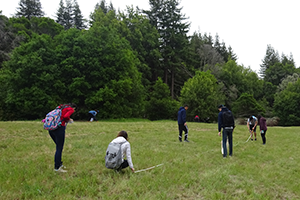 sampling, as students were joyfully waving their nets and chasing down butterflies, a family with two small children walked through the meadow. We asked the girls, “Look at what college is like--doesn’t it look fun?!” Offering these activities that spark childhood passions within the undergrads may lead to newfound or rediscovered interests that can then be pursued through further focused academics at UCSC.
sampling, as students were joyfully waving their nets and chasing down butterflies, a family with two small children walked through the meadow. We asked the girls, “Look at what college is like--doesn’t it look fun?!” Offering these activities that spark childhood passions within the undergrads may lead to newfound or rediscovered interests that can then be pursued through further focused academics at UCSC.
CalTEACH 1-Science (EDUC 50C)
16 students in Fall Quarter 2014 and 13 students in Winter Quarter 2015 participated in a mock-science lessons on the CNR. These lessons were designed by the course instructors and the CNR Manager for use with middleschool to high-school aged children. In the fall, students investigated invasive plant species distribution along roads (disturbed areas) versus interior forest (less-disturbed areas), and then used paired conversation and group explanation discourse tools to debrief their experience. The winter field trip focused on the art of questioning—how can you engage students in prolonged inquiry of their direct observations? Pairs of students found evidence of animals and practiced leading other pairs through a “who, what, when, where, why, how” series of questions to help them discover information about the anatomy, habits, and ecology of their subject animal.
Sustainable Living: ESLP Biomimicry (CLEI 161)
12 undergraduate students participated in this unique student-led course exploring the concept of biomimicry. Their final group project for the course was to design a biomimicry solution to a problem within the field of agroecology. As biomimicry involves gaining inspiration from interactions and evolved traits in nature, we challenged the class to examine the redwood forest---an extremely different environment than an agroecosystem---to discover ways in which the redwood forest could inform better farming practices. After an observation period, students brought back interesting ideas to the group discussion, such as mulchind (accumulated redwood duff) and fog capture (redwood canopies intercept fog and drip it down to plants below).
Collaborative Learning (KRSG 72,73,74/172,173,174)
A combined 394 undergraduate students explored their individual connections to nature through a combination of sensory activities and group nature games during Fall Quarter 2014, Winter Quarter 2015, and Spring Quarter 2015. A smaller subset of students acted as facilitators for small group activities, gaining practice in environmental interpretation, group management and leadership.
Sound in Art, Science, and the Environment (MUSIC 80K)
77 students participated in two field trips during regularly-scheduled lecture periods. These trips were a result of a new collaboration between Professor David Dunn, his graduate student Andrea Steves, and the CNR which has thus far also resulted in several trips to make field recordings using hydrophones and specialized microphones that allowed us to investigate sounds within a large California wood ant nest. These two class field trips allowed students to investigate the local soundscape through the listening exercises, sound mapping, and use of high-powered custom microphones, as well as to use the natural soundscape as inspiration for spontaneous group compositions.
19th Century Environment (HIST 177)
34 undergraduate students toured the UCSC Upper Quarry and other historical remains from the Cowell Ranch days, learning details about life on the ranch while examining ecological clues that tell the stories of disturbance from quarrying, logging, and fire. Students then, in writing, contrasted their lives and relationships to the campus’s lands with the perspectives they imagined the Cowell Ranch laborers may have possessed. This field activity was followed up with a homework assignment to write an introduction to a historical field guide to the UCSC campus lands in the 19th century.
Intro to Natural Science Illustration (SCIC 106A)
Though the instructor of this class took her students into the field independently, she collaborated with the CNR Manager in summer 2015 for 2 field trips. 12 students ventured into the field for field sketching practice twice during summer 2014, developing the difficult skill of capturing the beauty and complexity of nature on the page.
Hearing Culture: The Anthropology of Sound (ANTH 194S)
This brand-new course during spring 2015 explored the relationships between the cultural and acoustic worlds, how sound is shaped by human culture, and how sound influences cultural and social life, both past and present. 20 students accompanied the CNR Manager into the field to learn about bird vocalizations and how past cultures used their awareness of these sounds to detect predators, avoid detection while hunting or scouting, and better understand the natural world.
California Geology (EART 5)
In Fall Quarter 2014, 214 students were split into four groups and taken on a tour of outcrops of the campus’s four major bedrock types. Students sketched their tour routes on topographic maps, becoming more familiar with their campus while learning to see geologic time and stories in the features visible today. A smaller subset of the class later visited Empire Cave to learn about karst geology.
